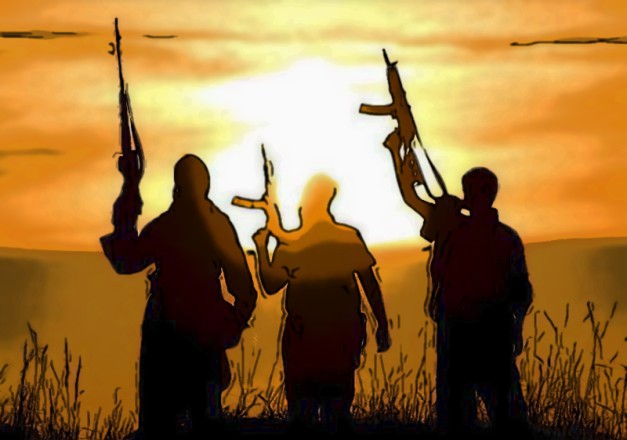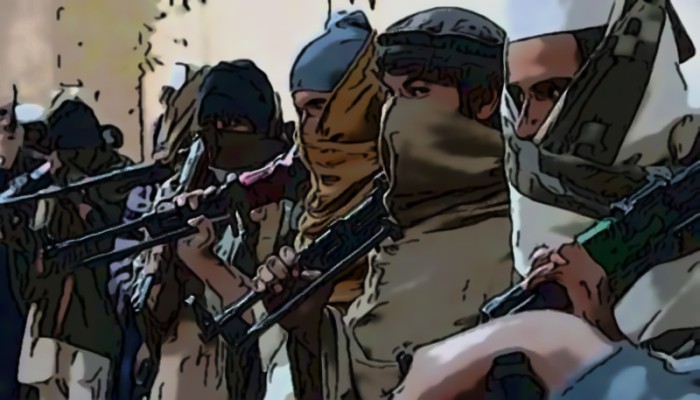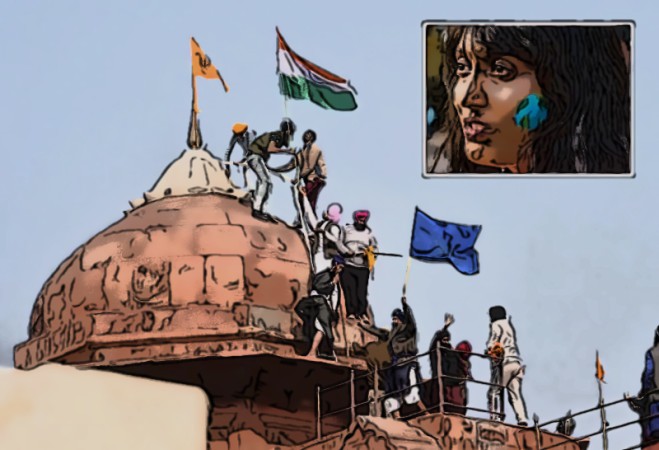
Summary:
- What is this K2 desk of ISI? Why did India’s youth come to become part of the K2’s operations? Answering these questions is essential to understand the true nature of threat that India faces.
- Op K2M completely rested on the ISI’s ability to exploit growing socio-political frictions within India towards the objective of ensuring a complete national disintegration.
- The new operation, which is essentially re-operationalising the erstwhile Op K2M, is called Operation Express.
- Pakistan realised that a militarily as well as economically stronger India could only be contained through sub-conventional warfare. The aim would be to disrupt India’s economy and social harmony and, thereby, destroy India’s national image.
- This brings the question as to why are young activists unaware of the national security threats involved in cooperating with foreigners such as Pieter Friedrich?
- The root of this problem lies in the deliberate deceitful narrative that has been crafted since 2014 by the liberal-left.
- In its renewed form the Op K2M can be truly menacing since the new dividing lines are between the informed and the misinformed.
- If we wish to protect India from plans like K2M, it is inevitable that our youth grow more security conscious, understand the limits to activisms in the age of social media, and most importantly, invest their time and energies in critically analysing readily available information.
The arrest of Bengaluru based climate activist Disha Ravi has caused a fury among critics of the incumbent government. Their main argument has been that this single act of arresting a 22-year-old has the potential to deter any youngster from taking up issues of social concern. Its another matter that the champions of free speech and social activism have conveniently ignored the fact that Disha was one of the authors of the “toolkit” that had onboard recognised enemies of the state such as Pieter Friedrich.
DCP Manish Chandra of the Delhi Police remarked on 15 February that Friedrich was an associate of Bhajan Singh Bhinder alias Iqbal Choudhury of the “K2 desk of ISI”. What is this K2 desk of ISI? Why did India’s youth come to become part of the K2’s operations? Answering these questions is essential to understand the true nature of threat that India faces.
The Origins of Operation K2M
Pakistan’s strategy of bleeding India through a thousand cuts was formalised right at the time of independence by the then Pakistan Intelligence Bureau’s director, Qurban Ali. Named after him, the Qurban Ali Doctrine called for a balkanisation of India into smaller states that would be incapable of securing itself. Implementation of the doctrine began with earnestness; Kashmir being the first theatre of operations where an Islamist cell was established. Subsequently, the Naga and Mizo insurgencies were extended support by the Inter-Services Intelligence (ISI). In 1971, however, the creation of Bangladesh denied Pakistan an access to India’s northeast, thereby, frustrating the objectives of the Qurban Ali doctrine. Nonetheless, in the late 1980s, the ISI would return with a renewed rigour, which would attain the name Operation K2M by 1992.
Between 1980 and 1992, three events took place that allowed the ISI to re-enter India in a coordinated manner. Firstly, a sinister political conspiracy formulated by Prime Minister Indira Gandhi’s colleagues gave birth to militancy in the state of Punjab. Although the roots of the Khalistani movement were in India, at least by 1988, it was completely sponsored and supported by the ISI. Secondly, a rigged election in the state of Jammu and Kashmir in 1987 gave birth to militancy in that state. Although there were Kashmiri youth who took up arms, the violence that rocked the state during the 90s was mostly perpetrated by foreign veterans of the Afghan War sponsored by the ISI.
In 1991, foreseeing the utility in synchronising the two insurgencies, Major Waqar Ahmed, the ISI officer handling the Babbar Khalsa International, proposed the formation of a K2 desk. According to Ahmed, the superior strength of the Indian security forces could only be tackled by de-localising the efforts of the Khalistani and Kashmiri militants.
The third event of significance came in 1992. Following the demolition of the Babri Masjid, the ISI had assessed that the time was ripe to foment unrest in India through orchestrating blasts across the country. To execute this plan, with Mohammed Sharif as his handler, Lal Singh alias Manjit Singh, a Khalistani militant, was sent to India to establish a base in Gujarat. Lal Singh was on the US Federal Bureau of Investigation’s (FBI) wanted list for a plot to assassinate Rajiv Gandhi during his stay in the US in 1985. On entering India, he was nabbed by the Bombay Police, which uncovered an elaborate conspiracy. The ISI had planned to target nuclear installations and the Madras Stock Exchange.
Op K2M completely rested on the ISI’s ability to exploit growing socio-political frictions within India towards the objective of ensuring a complete national disintegration.
The Indian Intelligence Bureau (IB) had presented an ominous report following the Bombay riots that India was on the brink of Muslim militancy. According to the report, fanatical groups such as the Students of Islamic Movement in India (SIMI) were gaining prominence. What was unbeknownst to Indian intelligence agencies was the growing nexus between the ISI and Bombay’s organised crime groups, which led to the 1993 serial blasts. Thus, by 1993, Op K2M was operational and costing India hugely in terms of money and manpower.
Op K2M completely rested on the ISI’s ability to exploit growing socio-political frictions within India towards the objective of ensuring a complete national disintegration. Such an opportunity was once again presented in 2018 when the New York-based separatist outfit, Sikh for Justice (SJF) called for a worldwide referendum in 2020 on an independent Sikh state. Since the ISI’s operational capability in India has been limited severely, instigating anti-India activities using such separatist outfits in western capitals is an easy option.
The new operation, which is essentially re-operationalising the erstwhile Op K2M, is called Operation Express. The Farm Laws 2020 and the Republic Day commitments of the Indian security forces only presented a permissive operating environment for Op Express to gain momentum.
The Subversive Dimension of Op K2M

While violence has been the most visible component of Op K2M, its more dangerous objective is far less understood in India. At the time the ISI formulated the K2M strategy, India had just liberalised its economy and was set to grow at much faster rates than it previously did. Pakistan realised that a militarily as well as economically stronger India could only be contained through sub-conventional warfare. The aim would be to disrupt India’s economy and social harmony and, thereby, destroy India’s national image – a key component for attracting foreign investment. Therefore, whilst attacking “soft targets”, the main objective was to raise doubts about India’s democracy, national security and also project India as a cause for regional instability. In this psychological campaign, Pakistan was helped by both Indian and international writers.
The psychological campaign dates back to 1947. Even as Qurban Ali called for the balkanisation of India, his theory was not without support from neutral international observers. For decades after India’s independence, western scholars and analysts had expressed doubts on India’s survivability and its democratic experiment. In their assessment, it was either a fragmentation of the nation into numerous ethno-linguistic states or a military takeover that could hold the nation together through the use of force. This is a classic case of how uninformed western observers were wrong about India back then; and are wrong even today.
Pakistan realised that a militarily as well as economically stronger India could only be contained through sub-conventional warfare. The aim would be to disrupt India’s economy and social harmony and, thereby, destroy India’s national image – a key component for attracting foreign investment.
In the recent times, as a counterweight to China, as a member of the QUAD, and/or as an investment destination for foreign capital, western analysis is increasingly tilted towards questioning India’s democracy and criticising its growing nationalism. It is this analysis that is feeding into Pakistan’s renewed Op K2M efforts. What India, however, needs to understand is that such foreign analysis is based on narratives coming out of India itself.
Both international observers, with little empirical basis to their arguments, as well as Pakistan’s information warriors rely on Indian commentary for furthering their agendas. For instance, let’s consider the EU Disinfolab report that Pakistan has been using to accuse India of running anti-Pakistan activities globally. Notwithstanding the Ministry of External Affairs’ (MEA) clarification that India did not engage in disinformation activities, the report itself does not tie its findings to the government of India. On the contrary, it makes an implausible case against certain news outfits in India using reports by other anti-establishment publications.
Similarly, when Pakistan approached the International Court of Justice (ICJ) on the Kulbhushan Jadhav case, the glaring gaps in the dossier assembled by its intelligence services were sought to be covered up using certain Indian media reports. Although none of these efforts have succeeded in destroying India’s image, the future may not seem so secure as India’s own youth tend to be falling prey to hostile disinformation. This, essentially, is the danger that India needs to prepare for going forward.
What Next?
Returning back to the Disha Ravi case, unless we are made aware of the charges being pressed against Disha, it would be difficult to pass a clear judgement on her; the national security imperative of the “toolkit” notwithstanding. Therefore, for purposes of analysis, even if we are to accept the popular narrative peddled by the left-liberals that an innocent 22-year-old climate change activist was only acting in favour of the protesting farmers, the question that remains is: why are these young activists unaware of the national security threats involved in cooperating with foreigners such as Pieter Friedrich? This is a discomforting question that public intellectuals defending young activists will need to answer.
The root of this problem lies in the deliberate deceitful narrative that has been crafted since 2014 by the liberal-left. Ever since the coming to power of the BJP in 2014, a distorted narrative has been floated that projects national security not as a sovereign necessity but as BJP’s tool to retain political power. Take any of these words: Pulwama, surgical strike, Siachen, jawans, etc. have all come to mean right-wing political terminologies. Consequently, genuine national security threats emanating from across the borders have not been sufficiently appreciated by the current generation of university entrants.
For instance, the term “Siachen”, which is supposed to indicate the world’s highest battlefield with ramifications for human life, national security and bilateral relations, is now made to be perceived as an excuse by the BJP to cover up its policy failures. To be clear, the only time Siachen figured seriously in the BJP’s narratives was when it was realised that there was an attempt to demilitarise the region favouring Pakistan under the UPA regime. But, readers will be familiar with mocking phrase like “Siachen mein humare jawan lad rahe hai” from at least a few years ago.
The root of this problem lies in the deliberate deceitful narrative that has been crafted since 2014 by the liberal-left. Ever since the coming to power of the BJP in 2014, a distorted narrative has been floated that projects national security not as a sovereign necessity but as BJP’s tool to retain political power.

Amidst an environment of such narratives, for a youth in his/her early twenties, identifying the blurring lines between political opposition and threatening national security has become increasingly difficult. For example, in an interview circulating on social media, Disha is seen commenting on Hindutva and the status of minorities in India.
Firstly, these comments are not backed by evidence.
Secondly, they are absolutely unrelated to the farmer’s agitation, but play right into the narratives crafted by the enemies of the state.
Why then were these comments made? Neither Disha nor her compatriots would be able to explain how Pieter Friedrich and Bhajan Singh concluded in their recent book that the March 2020 massacre of Sikhs in Afghanistan was a consequence of Hindu nationalist movement in India. It would not even be surprising if these youth are unaware of the existence of such literary works because the existing intellectual environment prioritises activism and protests over honest research and academic work.
Therefore, even as Indians recall Operation K2M, it is necessary to understand that ISI’s plan rested on both violent and non-violent foundations. The non-violent (subversion) aspect was far more dangerous than the violent (terrorism) aspect since that would weaken India’s standing in the international community and thereby hurt her economic and international political ambitions. To this end, Op K2M saw the Hindu-Muslim disunity as an ideal factor to exploit. Two decades later, it can be concluded that the communal solidarity between the two religions is far stronger than the artificial narrative of animosity sustained by certain vested interests.
In its renewed form, however, the Op K2M can be truly menacing since the new dividing lines are between the informed and the misinformed. Unfortunately, the misinformed are a vast majority, young and reactionary, which make them easy targets for hostile foreign actors.
Hence, moving forward, if we wish to protect India from plans like K2M, it is inevitable that our youth grow more security conscious, understand the limits to activisms in the age of social media, and most importantly, invest their time and energies in critically analysing readily available information. In other words, so long as the left-liberals fail in reshaping their narratives to avoid harming India’s security and interests, their arguments that arresting youngsters will have a deterring effect on future political and social activism holds no water.
(The views expressed are author’s own and does not necessarily express the views or opinions of Samvada World)
PhD in Intelligence Studies from the University of Leicester, U.K

What is operation K2M a brilliant article and all college students must read this to understand their responsibilities in building the nation rather than joining hands with ISI.